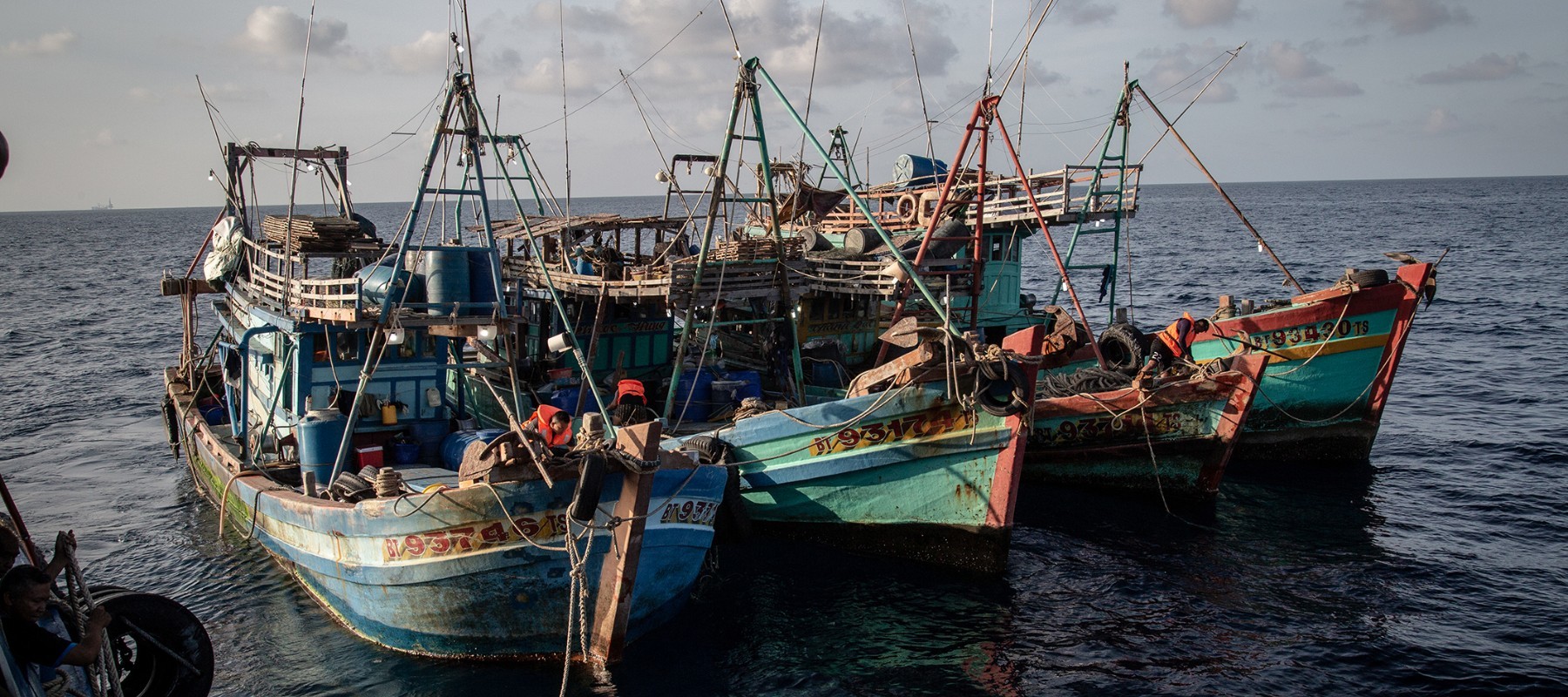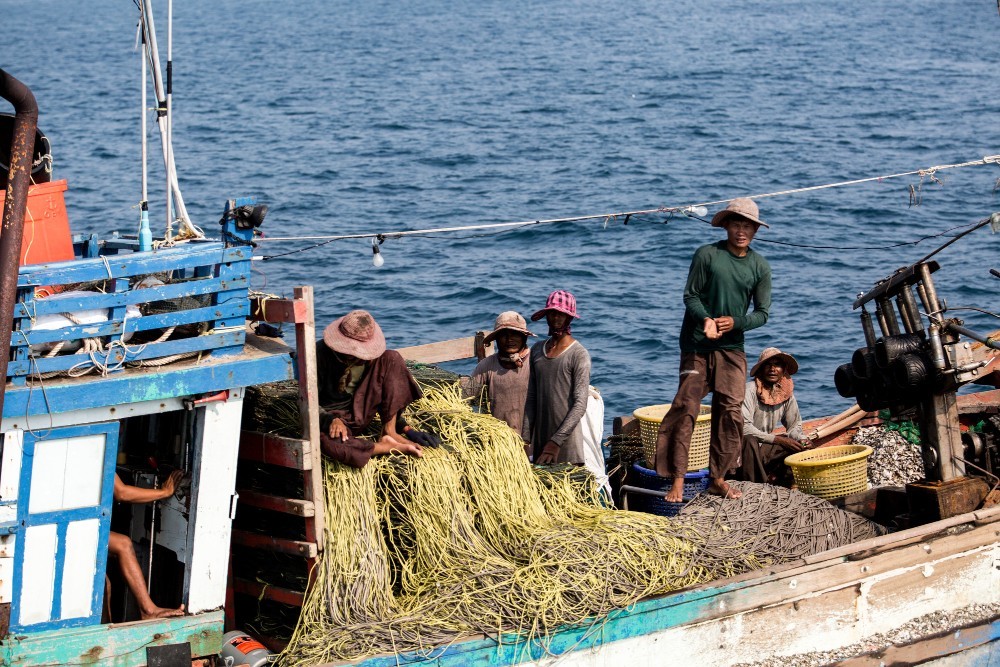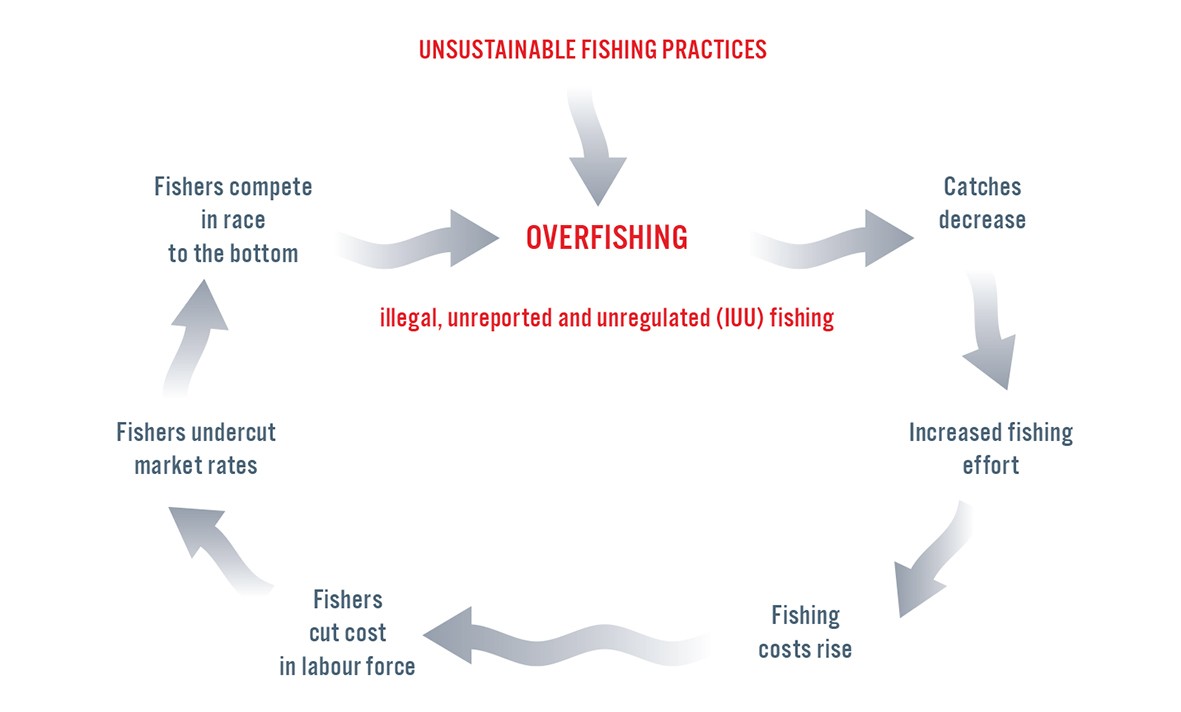Seafood is a multi-billion dollar global industry. Yet illegal fishing is devastating the oceans and driving human rights abuses.
Illegal fishing not only deprives nations of their resources, but ultimately results in the collapse of fish stocks. A third of fish stocks are fished beyond sustainable limits and 60% are on the edge, fished to the maximum sustainable limit.
Falling revenue, coupled with the growing demand for cheap seafood, have created powerful economic forces, driving down profits in many fisheries and leading to increased abuse of crews.
In recent years, EJF's reports, along with those by journalists and other NGOs, have repeatedly shown how overfishing and illegal fishing have substantially increased the risks of serious human rights abuses at sea.
Illegal fishing and human rights
Blood and Water sets out the links between rapidly declining fish stocks in the world’s oceans, in part caused by the widespread illegal, unreported and unregulated fishing, and serious human rights abuses in the global fishing industry.
It provides case studies describing the problem, and analyses solutions that can be employed to address it – in particular, the pressing need for greater transparency in fisheries.
Illegal, unregulated and unreported fishing
Illegal, unreported and unregulated fishing threatens marine environments and the people who rely on them.
By depleting fish stocks and biodiversity, illegal fishing puts the food security and livelihoods of coastal communities at risk. 90% of people employed in capture fisheries work in small-scale fisheries.
It also deprives countries of their marine resources and undermines efforts to manage fisheries sustainably.
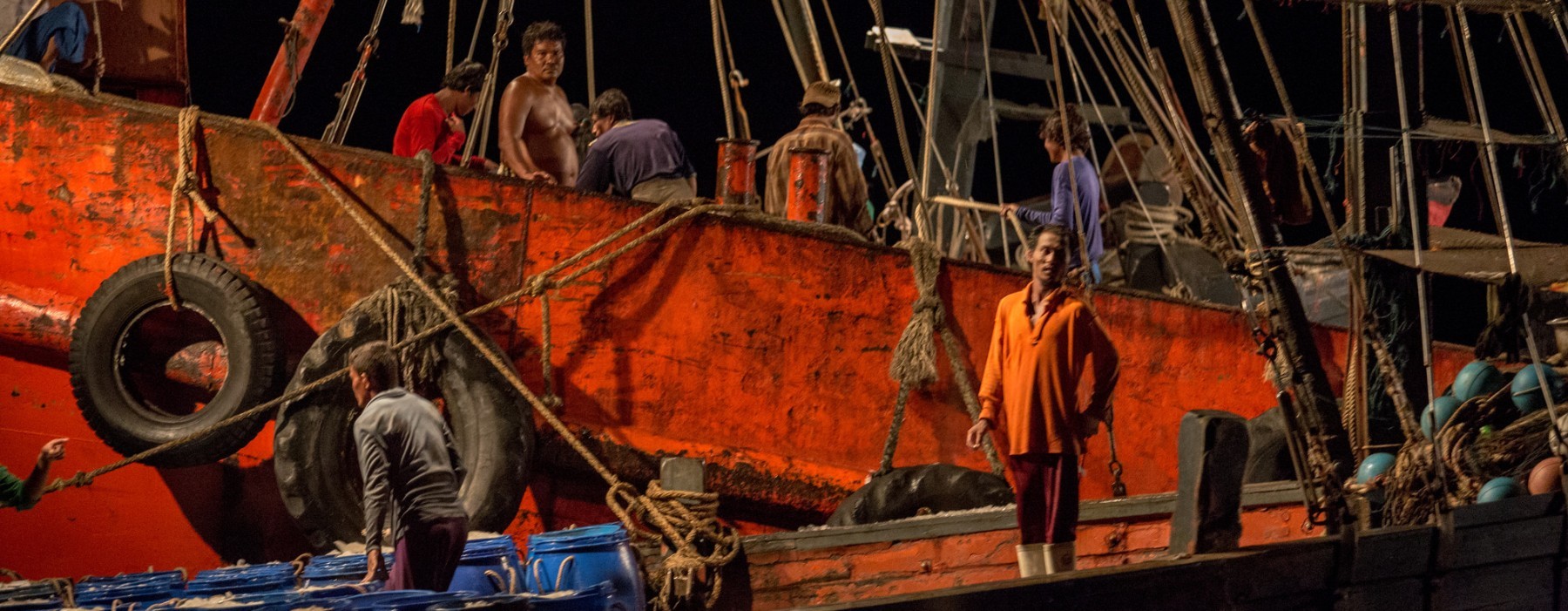
Examples of illegal fishing
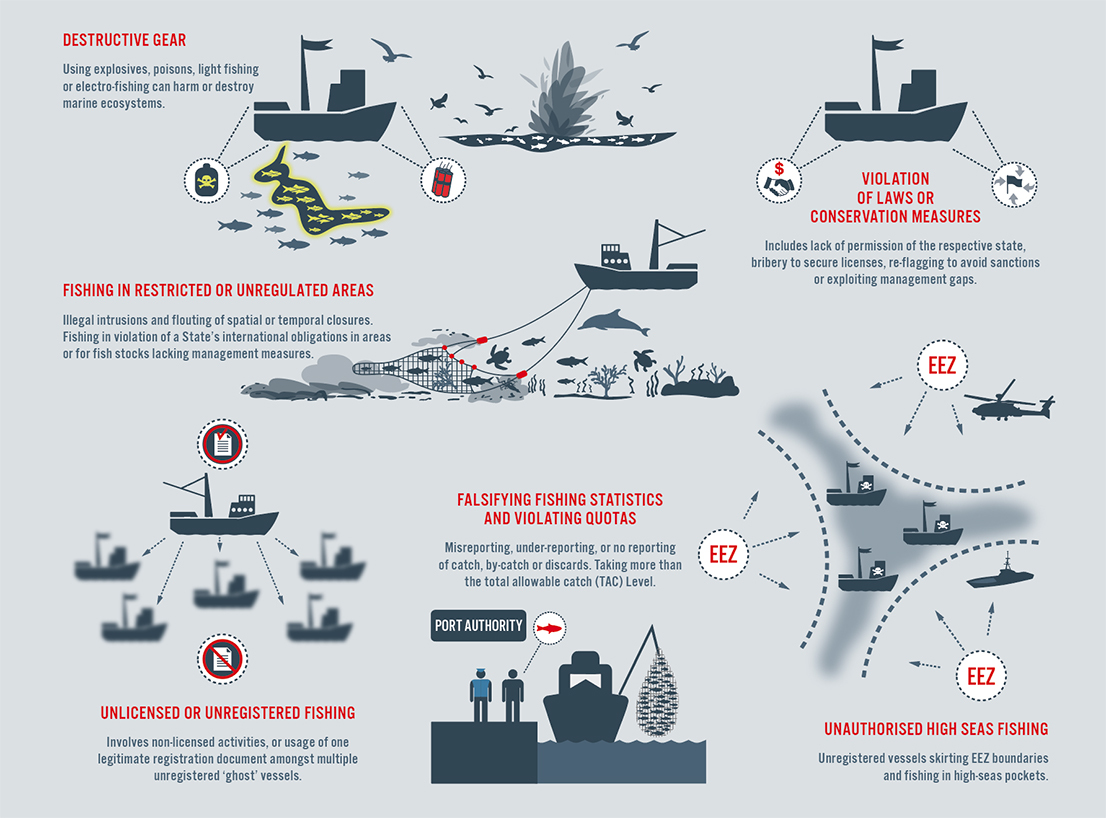
Why are workers vulnerable to slavery, trafficking and forced labour?
- At sea, escape is difficult and often impossible.
- The isolation and distance from regulatory agencies mean very little oversight, allowing unscrupulous vessel operators to commit crimes and abuses.
- There may not be effective protection against abuses (either because of a lack of appropriate regulation, because countries are under resourced, or because there is a lack of political will).
- Migrant workers might lack relevant documentation.
- Recruitment agencies are often unregulated or poorly regulated.
- Workers may not be able to read their contracts in the language they are written in and may be unclear what their rights are.
- There is a critical lack of transparency and accountability in the global fishing industry.
There are currently no international requirements for measures such as a unique vessel identifiers or registration on a global record of fishing vessels, which would help authorities track vessels. Vessels may also intentionally register with states less able or willing to exercise control on vessels. This is known as using ‘flags of convenience’.
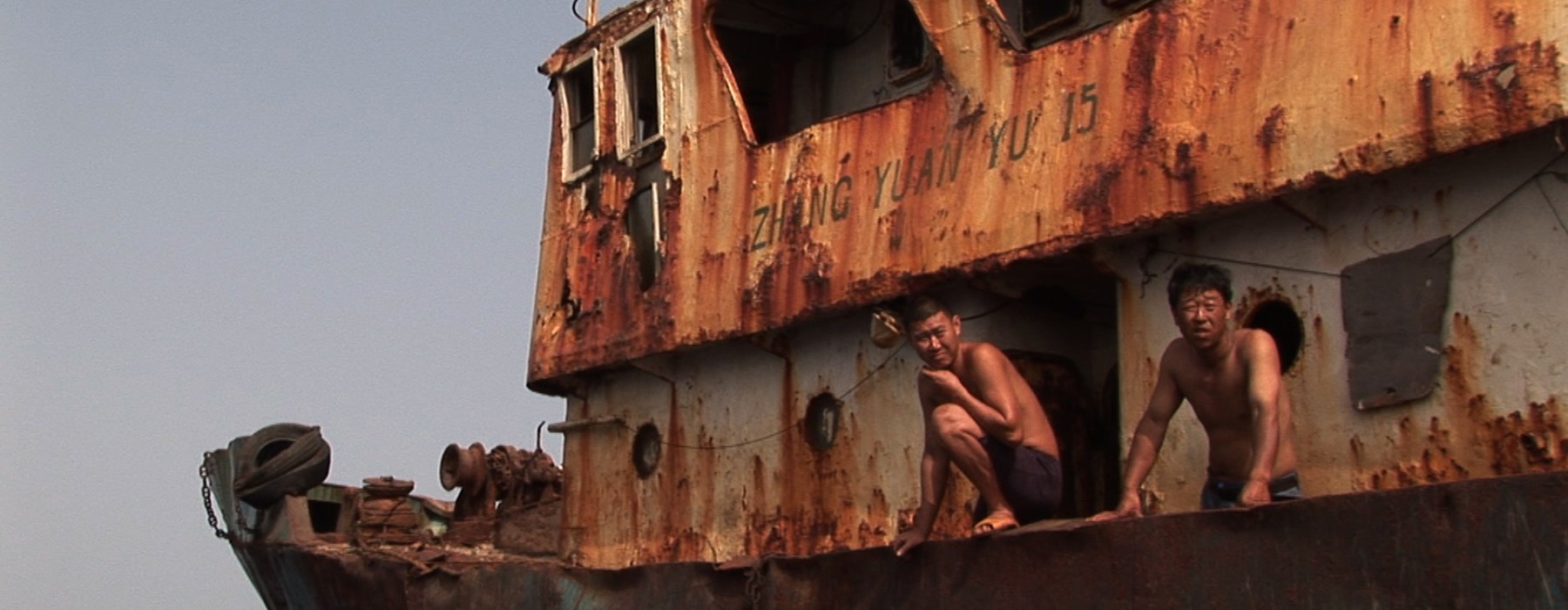
Vulnerable workers
Migrant workers are especially vulnerable to forced labour because they often experience communication and cultural barriers. This increases the likelihood of abuse.
For instance, contracts may not be provided in their native language, meaning that they cannot understand the conditions of their employment.
In addition to often having weaker legal protections, migrants may be unaware of those rights they do have and may not know they can report grievances or complain about working conditions.
Abuses that workers can experience onboard fishing vessels
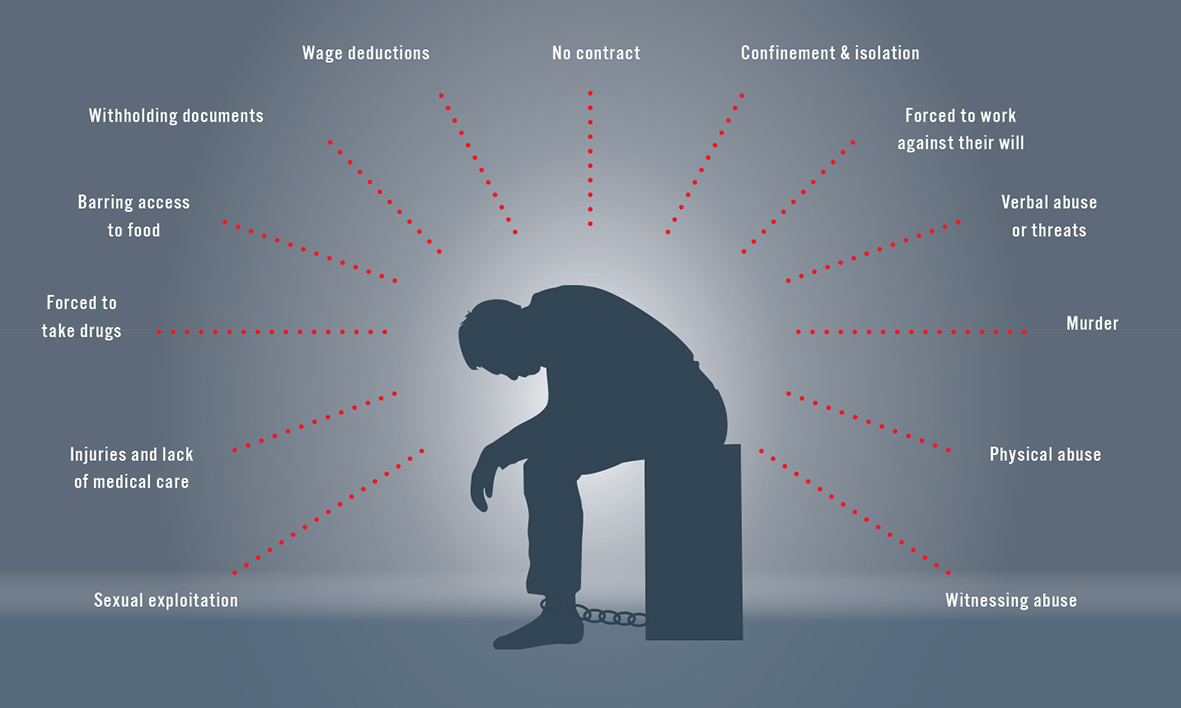
The debt bondage cycle
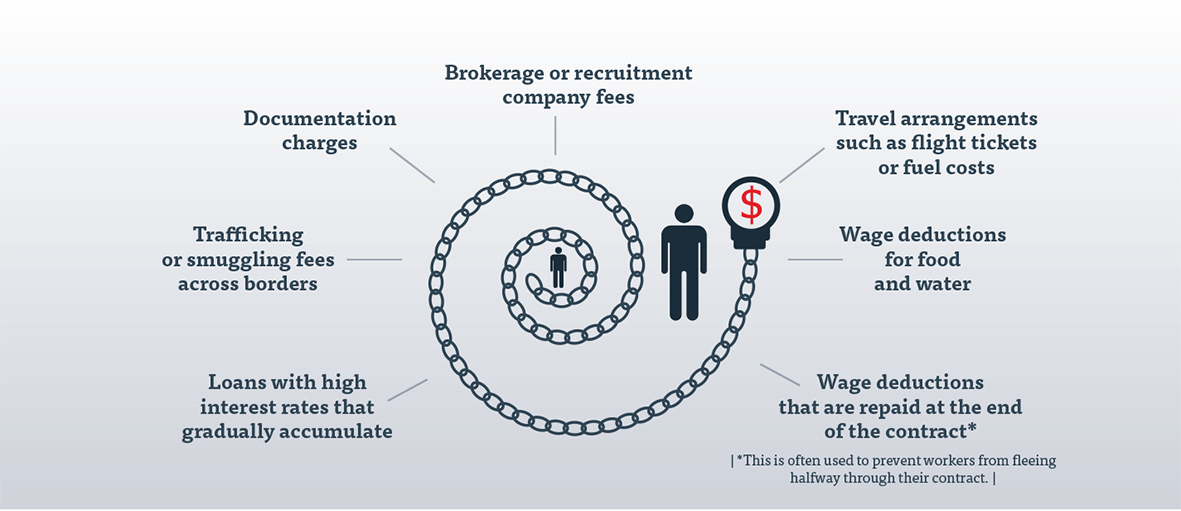

Finding a way forward
Those who engage in slavery and human trafficking in fisheries capitalise on gaps in monitoring, surveillance and enforcement. Weak governance has allowed these issues to become embedded in many national seafood supply chains.
Practices such as trans-shipment at sea and the use of flags of convenience further exacerbate these risks, making it more difficult to identify and track possible cases of illegal fishing or labour abuses and less likely that governments can take enforcement action. These practices also facilitate other illegal activities such as drug or weapons trafficking, and can be associated with the use of tax havens.
Just as there is a direct causal link between illegal fishing and human rights abuses at sea, the approach to stopping them must be aligned. Fortunately, there are now solutions that are easily implemented and increasingly affordable. States and international authorities, fishing companies, processors, importers, retailers and consumers can all play a part.
Contributing risk factors of human trafficking and forced labour on board fishing boats
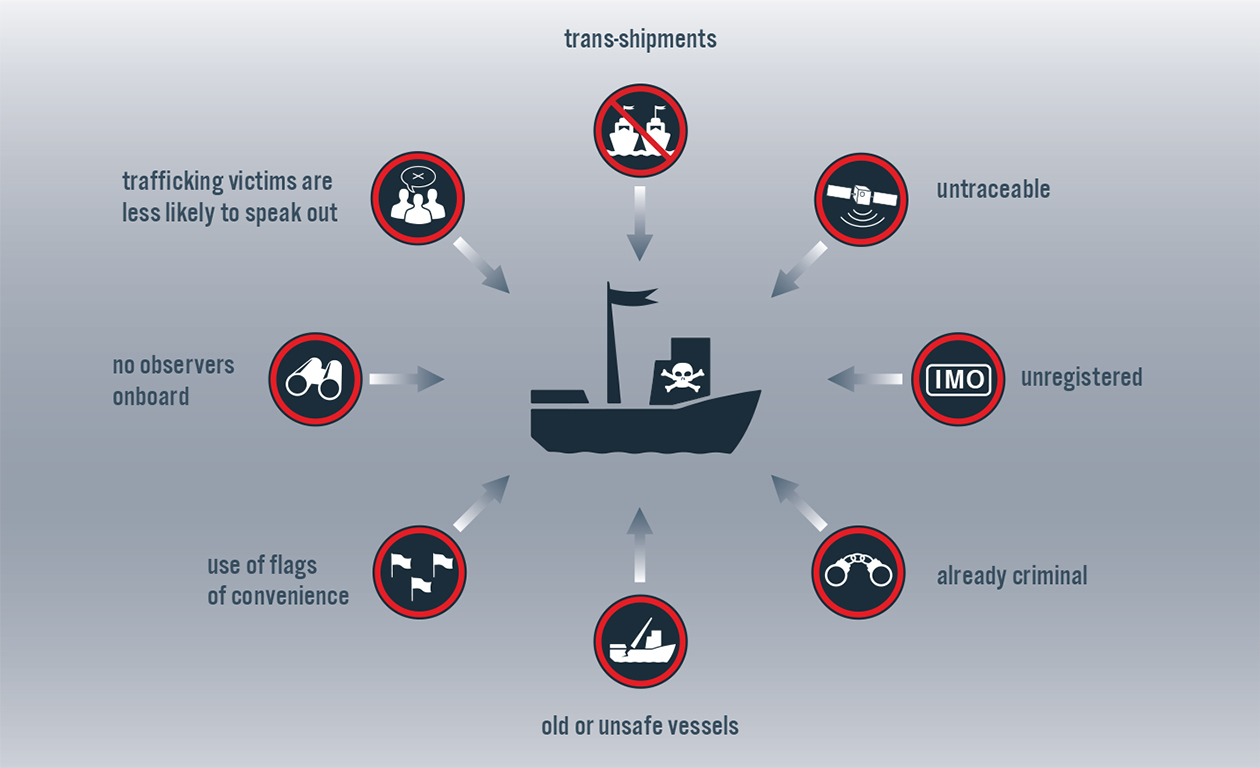
EJF recommendations for countries
To combat human rights abuses and associated problems in the seafood industry, states should embrace greater transparency, bringing fisheries out of the shadows. EJF has developed ten transparency principles that can be applied today at low cost.
They are:
1. Give all vessels a unique number.
2 Make vessel tracking data public.
3. Publish lists of fishing licences and authorisations.
4. Publish punishments handed out for fisheries crimes.
5. Ban transferring fish between boats at sea – unless pre-authorised and carefully monitored.
6. Set up a digital database of vessel information.
7. Stop the use of flags of convenience for fishing vessels.
8. Publish details of the true owners of each vessel – who takes home the profit?
9. Punish anyone involved in illegal, unreported and unregulated fishing.
10. Adopt international measures that set clear standards for fishing vessels and the trade in fisheries products.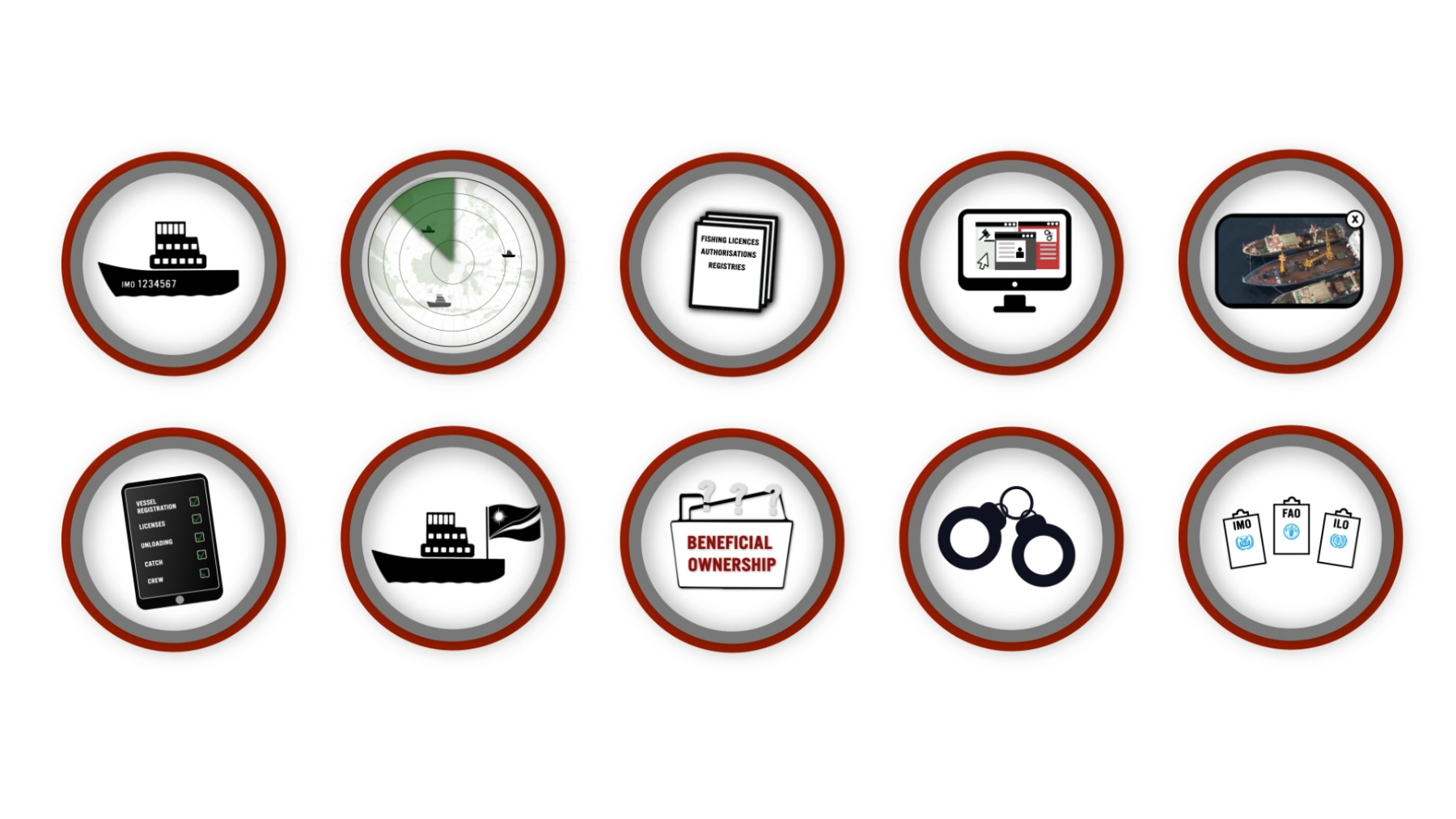
In addition to adopting these transparency principles, states should also do the following to tackle serious human rights abuses in their fishing industries:
- Ensure appropriate legal mandates, training and support for relevant authorities.
- Tightly regulate the recruitment process for migrant workers on fishing vessels, ending the ability for brokers to use exploitative contracts that create bonded labour.
- Provide sufficient resources for detection, investigation and prosecution of human rights cases in the seafood industry.
EJF Recommendations for industry
Along with the need to manage risks to reputation, industry face increasing regulatory requirements to consider the risks of human rights abuses in their supply chain. In 2011 the UN Human Rights Council issued Guiding Principles on Business and Human Rights to encourage states and industry to do more to address supply chain risks. This has been followed by increasing national laws, such as the UK’s Modern Slavery Act, that encourage industry to understand and mitigate human rights abuses in their supply chains.
Corporations involved in the global seafood industry should:
Adopt clear risk mitigation policies and processes that extend through the supply chain, backed with third-party verification, to identify and deal with human rights abuses and associated issues. EJF, together with WWF, other NGOs and industry developed a Code of Practice that supports processors and importers to do this.
- Record, or demand, sufficient data on sourcing vessels to ensure no vessel with a history of committing IUU fishing or labour abuses can taint the supply chain.
- Use in-house and third party verification to ensure the accuracy of this data.
- Raise awareness on the dangers of the informal recruitment industry and promote responsible recruitment practices and work that excludes recruitment fees for workers.
- Only work with suppliers that have a system in place, or are working towards a system for transparency and traceability - including the tracing of protein source for farmed seafood.
- Require that social audits or other verifications measures used to check working conditions on fishing vessels provide a safe and confidential opportunity to hear directly from workers.
- Work in pre-competitive industry groups and with NGOs to call on states to implement greater transparency to make it easier to implement risk mitigation measures.
EJF Recommandations for consumers
Consumers can play their part to encourage industry to do more to address risks in their seafood supply chains. They can:
- Demand proof of net-to-plate traceability and clear, specific assurance that products are caught or farmed legally, sustainably and ethically.
- Require businesses to publicly state the measures they are taking to ensure they are not sourcing products that use trafficked, bonded, forced or slave labour.
- Use their collective power to drive change in shops and restaurants to make sure they only source seafood that is environmentally and socially responsible.
- Ask retailers to sign up to EJF’s Transparency Charter.
